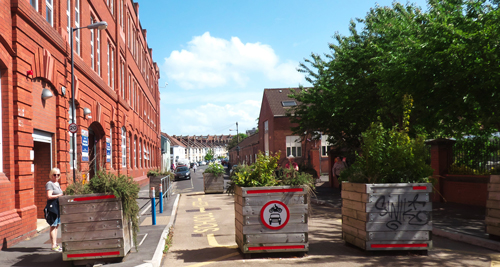Consultation on EATF Schemes
13th November 2020

When announcing Tranche 2 allocations from the Emergency Active Travel Fund (EATF) today, the DfT also published additional Statutory Guidance. It stresses that EATF measures should be implemented quickly, but there should still be consultation with local communities.
Foreword
In the Foreword, Shapps says that 'we need people to carry on cycling, and to be joined by millions more, particularly while public transport capacity is still reduced.'
Towns and cities in the UK have made radical changes to their roads, according to the Secretary of State. No doubt that is true of some towns and cities, but it doesn't apply in North Yorkshire. The county council has made a token gesture towards walking by plonking a few orange cones on certain streets in Harrogate town centre; it has done nothing at all for cycling.
Shapps notes that 40% of urban journeys are less than 2 miles - "perfectly suited to walking and cycling".
The Foreword ends on a positive note.
'The government therefore expects local authorities to make significant changes to their road layouts to give more space to cyclists and pedestrians. Such changes will help embed altered behaviours and demonstrate the positive effects of active travel.'
Hello, North Yorkshire County Council: we are waiting.
Consultation
The additional Statutory Guidance stresses that measures to promote active travel should be taken as swiftly as possible, but not at the expense of consulting local communities. Effective engagement with the local community at an early stage, as recommended in LTN 1/20 Cycle Infrastructure Design, is essential to ensuring public acceptance of schemes.
Cycle Infrastructure Design
It also stresses that the standards contained in Cycle Infrastructure Design should be followed. This means physical protection for bike lanes, the introduction of more 'school streets', adopting 20mph speed limits, using modal filters, and accommodating more cyclists at junctions.
Wider Pavements
The Guidance says that changes to social distancing requirements may mean that widened pavements are no longer needed. I don't understand this at all.
Traffic Regulation Orders
Experimental Traffic Regulation Orders (TROs) are used to trial schemes that may be made permanent. Although the initial implementation period may be quick, local residents and businesses should still be given an opportunity to comment on proposed changes. There should be monitoring during the trial, then a chance for more consultation afterwards.
Other than Experimental TROs, the other types are Temporary and Permanent TROs.